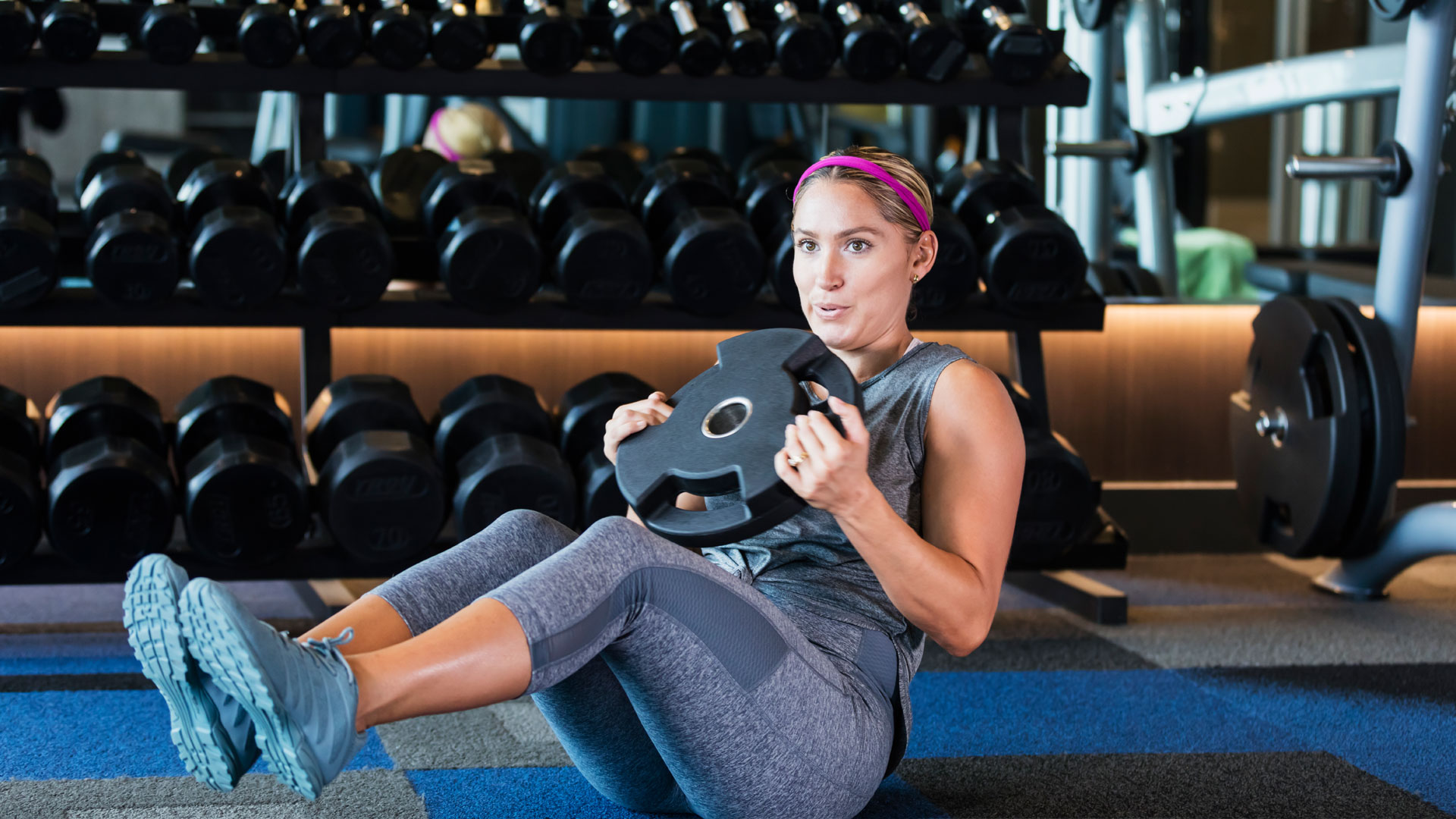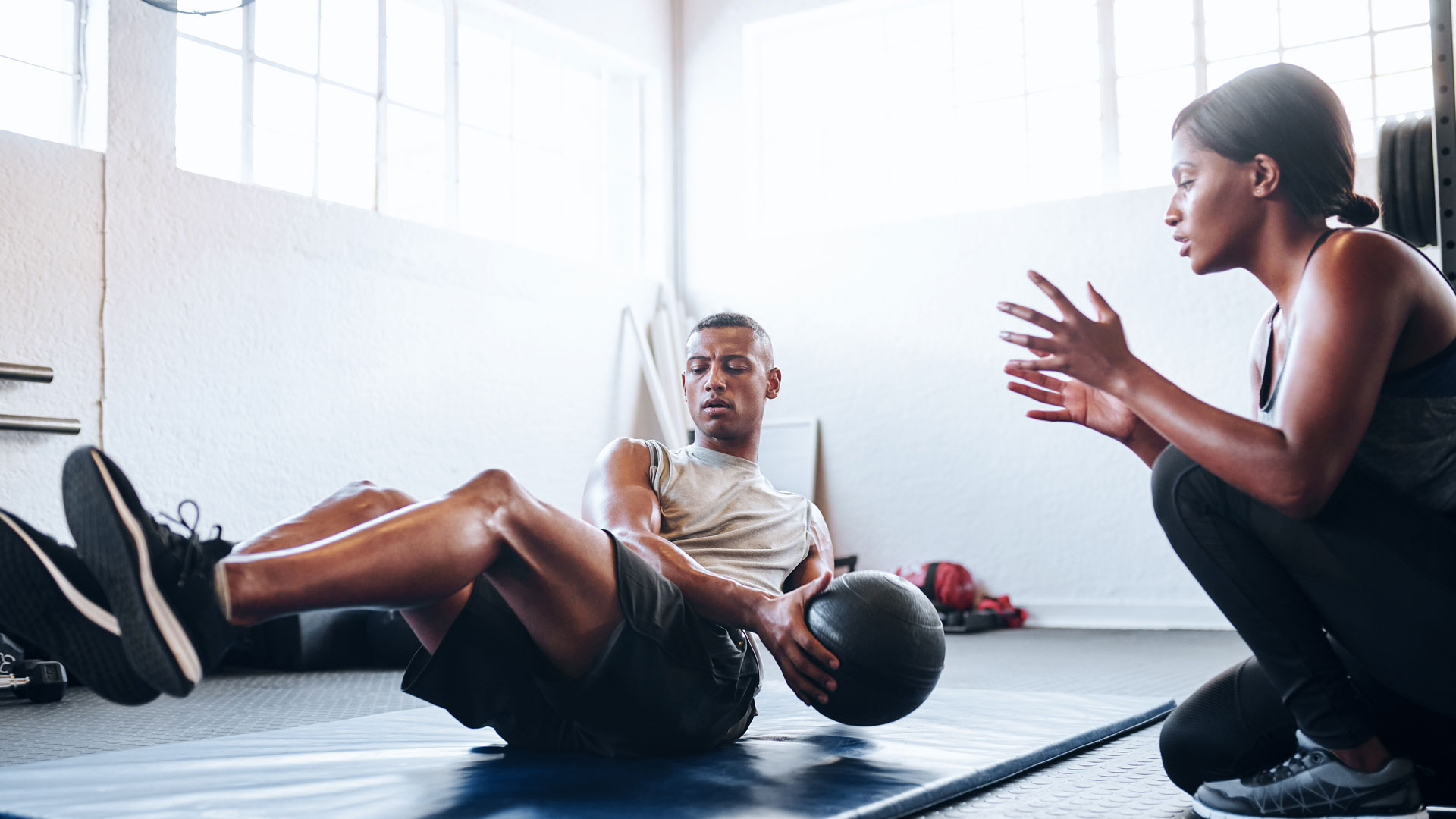Ab workouts with weights: build core strength with these moves
Looking for ab workouts with weights? We spoke to a personal trainer to get the lowdown


Building ab workouts with weights into your fitness routine will help you develop a strong core, but is the addition of weights any more effective when it comes to sculpting your waist? We spoke to a personal trainer to find out.
Adding weights to your core workouts can be as simple as using one of the best adjustable dumbbells while you perform a series of moves. That extra weight makes your entire system work that bit harder, including your midsection because that's your center of gravity.
There are a huge range of benefits of strengthening your core (which we’ll get onto in a moment), but is there a certain amount of weight you should be adding? And is it really worth it?
What are the benefits of ab workouts?
Personal trainer Chris Lowden explains, “Training and developing a strong core is fundamental in training and so staying active as we grow older. Our core is what allows us to move and we often use it without thinking. As we get older, we start to spend less time moving and more time sitting, and as such, our core weakens. Like all muscles, the less we do with them, the weaker they become.”
“The core consists of the muscles surrounding your trunk to protect your vital organs from the ribs down to your pelvis; it includes your abdominals, obliques, diaphragm, pelvic floor, trunk extensors, and hip flexors. In modern life, we spend a lot of time sitting, which can weaken and stiffen the core, leading to postural changes and back pain. If we can keep working and developing our core, it can help us stay more mobile and active.”
“The core is there to support movement between the upper and lower body. We use it each time we lift something or move, so it's vital to ensure it's strong across all movement planes. As we get older, the big thing we are fighting is inactivity. Strong muscles, including your core, allow us to keep moving as well as give us the confidence to do everyday activities.”

Does using weights for your abs build muscle faster?
Lowden says, “There are different methods to train your core through isometric holds and move it through a range of exercises, weighted and unweighted. Both have many benefits, but we also need to ensure that we don't train one movement partner more than the other. “
Start your week with achievable workout ideas, health tips and wellbeing advice in your inbox.
“Training your front abs to chase a six-pack can lead to huge overtraining of one muscle group or one plane of movement. This imbalance can lead to potential injury as one muscle group will overpower the other causing an unnatural shortening and lengthening of muscle. The imbalance will make the core unstable, and the potential for injury will increase.”
“Resistance training will increase muscle mass and strength but it's essential to ensure it's part of a well-rounded training program. Overloading any muscle with weights hoping it can lead to quicker muscular development can lead to over-exertion and has the potential for injury.”
Ab workouts with weights: 7 moves to build core strength

Chris Lowden talks us through his top seven moves to build core strength with weights:
Weighted plank
This isolated hold will put pressure through your core. It's crucial to keep tension through your body from the abs, core, glutes, and quads. You can add weight to your back to apply more pressure to the movements and help develop more isometric strength.
- To perform the plank, have your hands and or elbows on the floor directly under your shoulder, toes on the floor, and bracing (creating tension) through your body.
- You should be able to hold a straight line from shoulders to toes.
- To increase pressure on the core, a weight can be added to your back as long as you can retain the correct position.
Single arm weighted holds or carry
This loads one side forcing the body to brace against the weight and stop leaning to one side.
- Standing upright, shoulders and back in a neutral position, lifting a weight on one side, holding it close to your hip until your form breaks.
Weighted crunches
These specifically target the upper abs.
- Lying flat on the floor with your knees elevated and feet flat on the floor.
- Focus on pushing the lower back into the floor and curling up from the shoulders until the lower back lifts off the floor.
- Pause at the top of the rep, then lower yourself down in the same way until your shoulders are back on the floor.
- It's important that you don't let your feet lift off the ground.
Weighted lying leg raises
This exercise focus on the lower abs or the V that people want.
- Lie down on the floor with your arms by your side.
- Hold the weight between your legs, aiming to keep the legs straight until you get to 90 degrees bracing your abs and core as the legs go up and down under control.
Weighted Russian twists

This is a rotation exercise, working the core through a different range of movement.
- Sitting on the floor with a weight in your hands starting on your stomach.
- Lean back about 45 degrees with your knees bent and feet flat on the floor.
- Focus on moving the weight from left to right by rotating your shoulders and not using your arms.
- To increase the intensity of the exercise, you can lean further back or bring your feet off the ground.
Weighted side bends
This exercise targets the obliques.
- Stand straight up with good posture, have a weight on one side and your feet shoulder-width apart.
- Slide your hand with the weight down your leg allowing the opposite side to stretch.
- When you have gone as low as you can without losing tension or position raise the weight back up by contracting your obliques and keeping control of the movement.
Hanging dumbbell hold knee raises
This is a more advanced version of the lying leg raises, but you are adding on more resistance by hanging from a bar for this lower ab burner.
- From a hanging position, have a weight between your legs, brace through your core, and then bring your knees up as high as possible under control.
- Allow the hips to curl forward at the top of the movement to engage further.
- Ensure that you lower your legs under control and maintain tension throughout the whole exercise.
Looking for other workout ideas? Find out which came out on top when we compared cardio vs weights.
Catherine is a freelance journalist writing across titles such as Verywell Health, Healthline, The Daily Telegraph, Refinery29, Elle, and Vogue. She specializes in content covering health, fitness, wellness, and culture.
A once reluctant runner, Catherine has competed in 30 running events in the past five years and looks forward to one day running the London Marathon.
